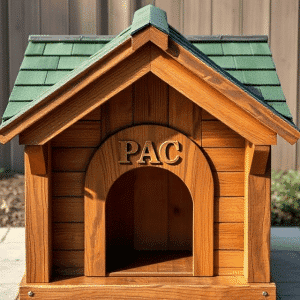Dog years to Human years calculator
Discover your pet’s age easily with our pet age calculator, and convert dog years to human years with our reliable human years to dog years calculator.

Select Pet Type:

Select Size:
(20 lbs or Less)
(21-50 lbs)
(51-100 lbs)
(100+ lbs)
Enter Age In Years:
Your dog's age in human years:
Your Results
In human years, your dog is...
and would be considered an...
by a vet
How to Calculate Dog Years to Human Years?
Understanding your pet’s age can make a big difference in how you care for them. A pet age calculator isn’t just a perfect tool, it can help you figure out what your dog needs at different stages of life. Knowing how your dog’s age translates into human years isn’t just trivia; it’s a way to make better decisions about their diet, exercise, and overall care. Every stage of your dog’s life brings new joys and challenges. A playful puppy has different needs than a slower, more relaxed senior dog, and understanding these changes can make all the difference in keeping them happy and healthy.

Have you ever thought about how these age calculations work or why they’re even important? It’s not just about curiosity—it’s about knowing when to adjust their care, whether it’s switching to a diet for aging joints or making sure they’re still getting enough mental stimulation. The way we think about age and life stages in pets has evolved over time, giving us more insight into how to give them the best possible care. Whether you’ve had pets for years or just got your first dog, understanding their age in human years helps you support them as they grow. It’s a simple way to ensure they stay healthy and happy.
What is a Dog Age Calculator?
I remember adopting my dog Fido when he was just one year old, and a friend told me his age equaled seven years in human time. However, modern researchers say the simple math we often hear isn’t always accurate when calculating a dog’s age, because factors like size, breed, and DNA changes over time all matter. Rather than just multiply your pup’s age, a dog age calculator that accounts for different stages of a dog’s life is better, since dog year comparisons to human years need a careful method.
My own experience confirms this more accurate approach, and by checking an age chart or reading a blog, I discovered fun ways—like putting a party hat on his next big day or baking a dog-friendly cake—to celebrate each birthday. One idea is to adapt his treatment to his unique dog’s lifespan, which may be shorter than ours as humans, so we should cherish every one of these milestones with our favorite pups as they age.
Dog Years to Human Years Table
| Years of Age | Small Dogs (20 Pounds and Under) | Medium Dogs (21- 50 Pounds) | Large Dogs (51- 100 Pounds) | Giant Dogs (100 Pounds and Over) |
| 3 Months | Around 3 Years old | Around 3 Years old | Around 3 Years old | Around 3 Years old |
| 6 Months | Around 7 Years Old | Around 7 Years Old | Around 6 Years Old | Around 6 Years Old |
| 1 Year | 15 Years Old | 15 Years Old | 15 Years Old | 12 Years Old |
| 2 Years | 24 Years Old | 24 Years Old | 24 Years Old | 22 Years Old |
| 3 Years | 28 Years Old | 28 Years Old | 28 Years Old | 31 Years Old |
| 4 Years | 32 Years Old | 32 Years Old | 32 Years Old | 38 Years Old |
| 5 Years | 36 Years Old | 36 Years Old | 36 Years Old | 45 Years Old |
| 6 Years | 40 Years Old | 42 Years Old | 45 Years Old | 49 Years Old |
| 7 Years | 44 Years Old | 47 Years Old | 50 Years Old | 56 Years Old |
| 8 Years | 48 Years Old | 51 Years Old | 55 Years Old | 64 Years Old |
| 9 Years | 52 Years Old | 56 Years Old | 61 Years Old | 71 Years Old |
| 10 Years | 56 Years Old | 60 Years Old | 66 Years Old | 79 Years Old |
| 11 Years | 60 Years Old | 65 Years Old | 72 Years Old | 86 Years Old |
| 12 Years | 64 Years Old | 69 Years Old | 77 Years Old | 93 Years Old |
| 13 Years | 68 Years Old | 74 Years Old | 82 Years Old | 100 Years Old |
| 14 Years | 72 Years Old | 78 Years Old | 88 Years Old | 107 Years Old |
| 15 Years | 76 Years Old | 83 Years Old | 93 Years Old | 114 Years Old |
| 16 Years | 80 Years Old | 87 Years Old | 99 Years Old | 121 Years Old |
| 17 Years | 84 Years Old | 96 Years Old | 115 Years Old | 126 Years Old |
| 18 Years | 88 Years Old | 105 Years Old | 131 Years Old | 131 Years Old |
Installation Process
Follow Below Process to Install Application
Open App
First, download the APK file from the link provided above.

Install App
Tap on the downloaded APK file and then tap on the “Install” button.

Done Installation
Once installation done, Tap on “Open” to start the app.

A New Way to Calculate Dog Age
While exploring a pet age calculator, I came across a 2020 study from a team of researchers at the University of California in San Diego, who examined methylation in DNA to understand aging in genes, linking wrinkles on foreheads of older canines to comparing 100 Labradors, humans, and mice. According to these scientists, their formula helps calculate a dog’s age in human years by using an equation based on a natural logarithm, where you multiply the dog’s age by 16 and then adds 31 for a more accurate estimate, which I found fascinating when planning my Lab’s care.
Another Way to Understand Dog years in Human Years
My cousin once had a huge pup that reached middle age surprisingly slowly, while my own tiny buddy from the toy breeds seemed to become a 2-year-old adult dog before I knew it. These beloved dogs can vary wildly in how they mature throughout their life, and we can’t rely on just one formula to measure dog years.
We often hear about seven human years as a rough estimate, but that’s not scientifically proven and leads to discrepancies when factoring in size, breed, and the crucial role each plays in a dog’s life. For instance, smaller dogs usually live longer than larger ones, so experts recommend weighing breed size. According to the 15-9-5 rule, a canine’s first year is about 15 human years, the second year is 9 years, and 5 years for every year after, though that’s still an assumed guide.
At age 10, many medium-size pooches are entering middle aging, while some youthful pals still act like playful pups, and a 15-year-old dog may feel over 100 in human terms. I once cared for a mama spaniel producing a litter of six, which taught me how each year counts, especially as dogs become seniors. By the time 15 years pass, some pets have covered more than a half-century of human milestones, so understanding dog years shapes how we celebrate every birthday and adjust care to match each stage of their age.
You once adopted a dog with limited background history, making it hard to know its birthday, the year it was born, or an exact number of months, so you had to estimate an approximate age by checking its teeth for health.
Teeth health
In puppies, baby teeth emerge before 6 weeks, and they lose incisors around 4 months when canines come in; by 6 months, they usually have 42 permanent teeth that can feel thinner with sharper pricks. If you notice missing teeth or new adult teeth filling gaps, it may point to the first year, especially if they still look white near the first birthday. Over time, canines might start turning yellow, leading to periodontal disease after age 3, so an appropriate diet and a regular oral hygiene plan help protect them.
Coat color
Looking beyond teeth, a dog’s coat color offers more hints, since early gray hair can suggest a later life stage, comparable to how humans age. However, genetic factors and environmental factors also influence how its fur becomes gray, so you might see a gray-haired dog that still behaves young, or a pet with a rough start displaying its genetics through faster age progression.
The 6 Stages of A Dog’s Life
You may notice that dogs move through distinct life stages that mirror how humans experience progress at various rates, starting with puppyhood that lasts less than a year, similar to human childhood until around 10 or 12 years. Once they hit puberty, their aging becomes closely correlated with each breed, since small breeds often develop faster while large-breed dogs reach seniority more slowly, so understanding these milestones helps you offer the right care at every stage.
Puppy
You might use a pet age calculator to see how your new puppy is developmentally changing from the first half-year of its life, which often begins around 6 months, to about 2 years old, when it officially becomes an adult dog. During this timespan, it may seem like it can grow quite exponentially, gaining mass while losing its baby teeth, and you will notice a significant jump in height as it matures.
Junior
You might find it challenging to keep up with your adolescent dog around 6 months, since it may still act like a puppy yet rapidly approach sexual development and reproductive maturity as early as 9 months, eventually growing into a year old companion within a single year.
Adult
Your dog may seem fully grown at its first birthday, but it is only just entering the adult phase of life, and your vet could suggest switching from puppy chow to adult food or even recommend the right time to spay or neuter. By the second year, there is less linear growth, yet your companion may fill out and gain weight, losing that gangly appearance common in puppies. This shift typically happens within the last three life stages, which are often more straightforward than the first three, though the exact timing can vary depending on the breed.
Mature
When your dog enters this mature stage and becomes middle-aged, its metabolism can slow, raising the risk of becoming obese, so a vet may suggest switching to a low-calorie food to maintain a healthier weight.
Senior
You might notice your dog nearing the senior stage once it hits about the last 25% of its lifespan, often around 12 years, so talking to your vet about a senior diet with fewer calories and less fat can help them stay healthy, especially if they start slowing down by 9, which feels like a big shift compared to those active younger years.
Geriatric
Once your dog reaches the geriatric stage, you know it is entering the final period of its life, possibly nearing or having exceeded its usual age expectancy. During this time, many dogs may slow down and develop cognitive problems, including dog dementia, along with limited mobility that affects their everyday routine.
You can adapt by rearranging furniture to reduce barriers, carrying your companion up steps, and planning more cautious routes when traveling a long distance. Adjusting their exercise schedule to fit their limits helps them stay as content and comfortable as possible.
How Long Do Dogs Live
You may notice that a single dog can live a different length of time based on its size, breed, genes, and lifestyle, with smaller dog breeds often outliving larger ones; for example, an average small dog breed like a chihuahua, Chinese crested, or Pomeranian might reach 10 to 15 years or even 18 years old, whereas large dog breeds such as German shepherds, golden retrievers, or Labrador retrievers typically range from 8 to 12 years.
Still, genetics and overall lifespan also depend on factors inherited from parents, possible health conditions, and whether a breeder followed responsible breeding practices that reduce injuries or infectious diseases. Keeping an eye on extra pounds can further improve a dog’s life expectancy, especially when combined with proper nutrition, timely medicine, early diagnosis, and suitable treatment for any emerging disease.
Signs of Aging in Dogs
After you have adopted a new puppy or older dog with unclear history, you might struggle to identify its age or birth date, so you guess by looking at dog teeth as a rough idea and follow guidelines for dental care:
- By 8 weeks, baby teeth appear;
- By 7 months, permanent teeth become fully white and clean;
- By 1-2 years, they may develop duller teeth or back teeth with slight yellowing;
- By 3-5 years, you often see tartar buildup and tooth wear;
- By 5-10 years, more wear and possible disease emerge;
- By 10-15 years, you may notice heavy tartar or missing teeth, prompting a visit to the vet for a physical exam and tests on bones, joints, muscles, and internal organs, especially in senior dogs.
Signs of aging include cloudy eyes, gray hair on the muzzle, face, head, or body, along with loose skin, stiff legs, and bad breath leading to trouble getting around, plus new lumps, weight changes, trouble peeing, trouble pooping, bowel control or bladder control issues, and sometimes fear of people or objects, sleep changes, uneasiness, pacing, barking, repetitive behavior, forgetfulness, missed cues or commands, anxiousness, confusion, and becoming less active.
Why Dose My Dog’s Age Matter?
You might wonder why your dog’s age should matter so much, but knowing it helps you provide better care throughout their entire life, from spotting physical signs or mental signs of aging to planning nutrition and exercise. Whether you have a small dog that slowly reaches 7 or 8 years old, or a large dog that quickly hits 5 or 6 years old, knowing these milestones helps you manage their needs and keep them happy at every stage of life.
Many people still try to equate human years to canine years by following the rule to simply multiply a dog’s age by seven, but newer studies indicate this method is often outdated. A modern dog age calculator offers a more precise approximation, guiding us through each life stage so we can keep Fido happy and healthy without missing any special moments in a dog’s life.
How To Help Your Dog Live Longer
You want your dog to live longer and enjoy a healthier life, so here are some tips that begin with serving healthy food. Make sure you choose high-quality pet food containing plenty of protein, fats, carbohydrates, vitamins, and minerals, verifying it meets AAFCO (the Association of American Feed Control Officials) standards on the label for complete and balanced nutrition. Tracking your dog’s weight helps keep it in the normal range, so consult your vet to determine a normal weight goal, then adapt the right amount of exercise for high-energy breeds or low-energy breeds, taking into account their age and individual needs.
You should also keep your pet protected with vaccines and preventives against parvovirus, follow heartworm prevention guidelines, and stay on top of flea control, tick control, and intestinal parasite control, preventing serious diseases like distemper, rabies, or adenovirus. Regardless of your dog’s breed, watch for symptoms or signs that might appear in a specific breed, schedule regular checkup appointments with bloodwork, and adjust your routine as needed.
Finally, safeguard your pup from toxins and other harmful stuff such as alcohol, caffeine, chocolate, antifreeze, fabric softener sheets, insecticides, and pesticides, all of which can be dangerous. By following these steps, you create the best environment for a long and vibrant life for your companion.
Converting Human Years to Dog Years
Want to know what your age is in dog years? It’s a reverse process. Use the chart to estimate—find your human age and see which dog age matches. Or use the formula: dog age = e^((human age – 31)/16), where e ≈ 2.718. Example: For 40 human years, (40 – 31)/16 = 0.5625, e^0.5625 ≈ 1.75 dog years. Small dogs stretch this a bit longer; large dogs shorten it.
Popular Age Conversions
Here are answers to specific searches, using medium-size calculations (adjust for your dog’s size):
- 2 dog years = 24 human years
- 3 dog years = 28 human years
- 4 dog years = 32 human years
- 5 dog years = 36 human years
- 6 dog years = 41 human years
- 7 dog years = 46 human years
- 9 dog years = 56 human years
- 11 dog years = 65 human years
- 12 dog years = 69 human years
- 15 dog years = 83 human years
- 16 dog years = 87 human years
- 18 dog years = 96 human years
- 20 dog years = 105 human years
Human to dog years:
- 6 human years ≈ 0.5 dog years
- 9 human years ≈ 0.7 dog years
- 10 human years ≈ 0.8 dog years
- 13 human years ≈ 1 dog year
- 14 human years ≈ 1 dog year
- 16 human years ≈ 1.2 dog years
- 17 human years ≈ 1.3 dog years
- 18 human years ≈ 1.4 dog years
For small dogs, a 10-year-old might be closer to 56 human years, while a large one could be 70.
Did You Know?
You might be intrigued to learn that people have debated human-to-dog years for centuries, tracing back to 1268 when artisans created the Cosmati Pavement in Westminster Abbey, referencing Judgement Day, which every reader often considers as a primum mobile or hedge for comparing three years of dogs to horses, men, stags, ravens, eagles, and whales in a world that triples years through math, suggesting a dog lives nine for every man’s 80, even though modern statistics reveal it’s not entirely accurate; by the mid-20th century, experts recognized that lifespan depends on each species.
What are the main features and benefits?
Simple Input
Users can easily input their pet’s age and type.
Multi-Species Support
Pet age calculator support multiple species, such as dogs and cats.
Better Understanding
Helps pet owners understand their pet’s age in human terms, fostering better empathy and care.
Accurate Conversion
It accurately converts pet years to human years using the latest veterinary research.
User-Friendly Interface
Easy-to-use design for quick and hassle-free calculations.
Improved Bonding
Enhances the bond between pet owners and their pets by understanding their life stages better.
Using a pet age calculator can make you a more informed and attentive pet owner, ensuring your furry friends get the best care possible. 🐾
Latest from our blog
Our latest Products
-
 Bird crate$26.00
Bird crate$26.00 -
 Cat crate$50.00
Cat crate$50.00 -
Product on sale
 Dog hutOriginal price was: $60.00.$50.00Current price is: $50.00.
Dog hutOriginal price was: $60.00.$50.00Current price is: $50.00.
FAQ’s (Frequently Asked Questions)
How do I calculate my dog’s age in human years?
You can find your dog’s age in human years by treating the first year as 15 human years, the second year as nine human years, and for every additional year after that, you may add either four human years or five human years, depending on your pet’s size and general health.
Is 1 human year 7 years for a dog?
You may have heard this said when you are calculating dog years, yet there are no hard-and-fast rules for determining exactly how old your pet is in human year terms. A common general rule of thumb suggests a dog who is 2 years old might be the equivalent of about 24 in human years, adding four years for each year afterward for small dogs, four to five years for medium dogs, and five to six years for large dogs, so the question “How Old Is My Dog in Human Years?” has more nuances than a simple 7 years formula.
How old is 7 in cat years to human years?
One most common method to convert cat years to human years starts by counting the first two years of a cat’s life as 24 human years, then each additional year adds 4 human years, so a 7-year-old cat is considered a mature adult in its life stage. If you do the breakdown of those first 2 years (24) plus the next 5 years (5 x 4 = 20 human years), the total comes to 44 human years, making your 7 years old feline roughly equivalent to a 44-year-old human, putting it right in its prime.


















